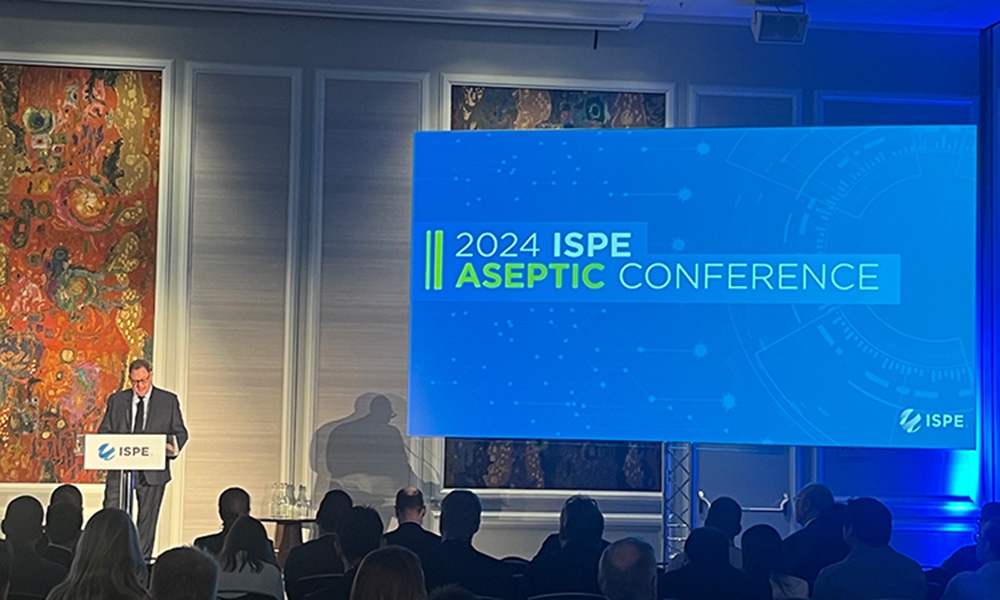Innovation, Industry, and Regulators: Moving the Industry Forward

Recap of the Opening Plenary Session of the 2019 ISPE Global Pharmaceutical Regulatory Summit
Industry and regulators came together on 5-6 December for the 2019 ISPE Global Pharmaceutical Regulatory Summit in North Bethesda, Md. Regulators were both presenters and participants in the plenaries and sessions, which shared current and future trends in regulatory considerations and approaches to new and emerging pharmaceutical technologies. The Opening Plenary featuring presentations from US FDA and MHRA leaders set the stage for the conversations about how the pharmaceutical industry can move innovation forward and how regulators can support and participate in the process.
Evolution to Innovation
Janet Woodcock, MD, Director, CDER, FDA, gave the first presentation during the Opening Plenary, “Evolution of Pharmaceutical Manufacturing: Science and Technology.” “It’s been a long journey,” Woodcock said. “We need to ignite innovation. We have not succeeded as much as we should, in my opinion.”
Since the FDA launched the Pharmaceutical Quality for the 21st Century initiative, progress has been made including the success of the Emerging Technology Program in CDER in helping to shepherd new technologies through the review process.
Another achievement has been the FDA support in the development of ICH 8, 9, and 10 guidances, which were intended to help bring about scientifically advanced manufacturing control practices and to get the international regulatory community on the same page. Although those three guidances “were pretty high level in the first iteration, we are working on them and talking about them. The concepts are advancing,” Woodcock said. FDA’s Office of Pharmaceutical Quality (OPQ) is another achievement that has been of particular help with outbreaks and other problems, she noted, as well as producing information about inspections, inventories, databases with accurate counts of facilities and inspections.
More is needed to move innovation forward, Woodcock said, especially to help combat the continuing challenge of drug shortages. The FDA report Drug Shortages: Root Causes and Potential Solutions provides detailed information and Woodcock encouraged attendees to read the full report. She addressed three root causes for drug shortages identified in the report in the context of innovation opportunities:
- Lack of incentive to produce less profitable drugs.
- The market does not recognize and reward manufacturers for mature quality management systems.
- Logistical and regulatory challenges make it hard for the market to recover after disruption.
Future steps to move innovation ahead:
- Explore market-based incentives to encourage mature quality management. One idea to consider could be a rating-based system to provide market transparency.
- Continuous and other advanced manufacturing have a small toehold now, “but we need to have them grow,” she said, noting they provide a great deal of the statistical input needed for quality control.
- Faster progress in developing and advanced manufacturing technologies and control strategies are still needed. Woodcock noted that she was heartened to hear recent announcements by some firms getting into this heavily with digital controls and investing heavily. “It could be the wave of future,” she said.
- Regulatory oversight to foster innovation including ETT remains key. Woodcock noted that ICH Q12’s technology and regulatory considerations for life-cycle management will be helpful. “It’s about change control: we need to trust the quality management system of the firm to be able to manage changes if we are not going to have the submission and review aspect.”
Innovation Enablers
David Churchward, Deputy Unit Manager, Inspectorate Strategy and Innovation, MHRA, spoke next about key areas relevant to innovation in the industry in his presentation “Healthcare of the Future: Creating an Enabling Environment for Pharmaceutical Innovation.”
Healthcare changes: Deeper understanding of biological basis of disease; early diagnosis, more targeted/effective treatments, and possible cure rather than lifelong treatment are some changes here. Market changes come along with these, including more differentiated diagnoses with different treatments. This in turn brings change in development/marketing of products. Cost models will change, Churchward said. Health systems need to weigh cheaper symptom treatments over life versus higher cost of a curative one-time treatment.
We’re moving to a healthcare management model, not just developing and manufacturing medicines,” he said. Some trends: combinations of medicines with condition management apps, digital, combinations of drugs, devices, and data to transform how disease is management. These developments are starting to blur the regulatory boundaries, we’ll need to react to this.
Technology and science changes: A move from a “blockbuster” approach to “niche-buster” approach is coming with earlier, targeted treatments through stratified or precision medicine treating a small subset of disease or even a single individual’s own blood or cells used for treatment.
Big data will have big impact: Churchward predicted that big data will transform how the industry and regulators operate, with the goal of continued improvement and quality. Personalized medicines and the changes in product type, short batches/short shelf life, will need repurposing of data generated to show that systems are operating in control and assure subsequent batches will be made according to that specification. Artificial intelligence (AI) is being thought about by many manufacturers including triaging quality systems records when an unexpected event takes place to try to identify root cause. The industry will need to have more creative thinking on managing changes and demonstrating that the process is under control with new approaches.
Supply chain changes: Supply chains need a new look and revision to regulations, especially in Europe, he said, to accommodate personalized medicine and the other trends.
Continued regulatory support: He cited innovation support from a number of regulatory authorities, including the MHRA Innovation Office (where he noted about 900 cases have come through since 2013); Early Access to Medicines Scheme (EAMS); the European Innovation Network in Europe; the US Breakthrough initiative; and Sakigate in Japan. Regulatory innovation from ICH and the International Coalition of Medicines Regulatory Authorities (ICMRA) also supports industry innovation.
For the future, Churchward is looking ahead to:
- Globalized industry and market—but not globalized regulation. There is convergence toward harmonization and the work will continue.
- Need to create an enabling environment, working together including far closer relationships between industry and regulators, with PIC/S, ICH, and ICMRA working on this.
- Need more integration as an industry into health-care delivery. He said the UK is doing this well, with a well-developed life sciences research center, one regulator for all life-cycle regulations, systems for health economics assessment, and a single health-care provider.
- It will be far more a joint journey in producing/making available high technology products, he said, predicting rolling assessments for quality and inspections alongside development of product so regulation does not become a barrier to development.
It all leads to improved quality, access, and continuity of supply.




